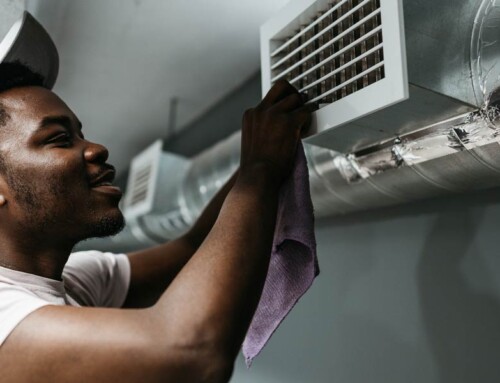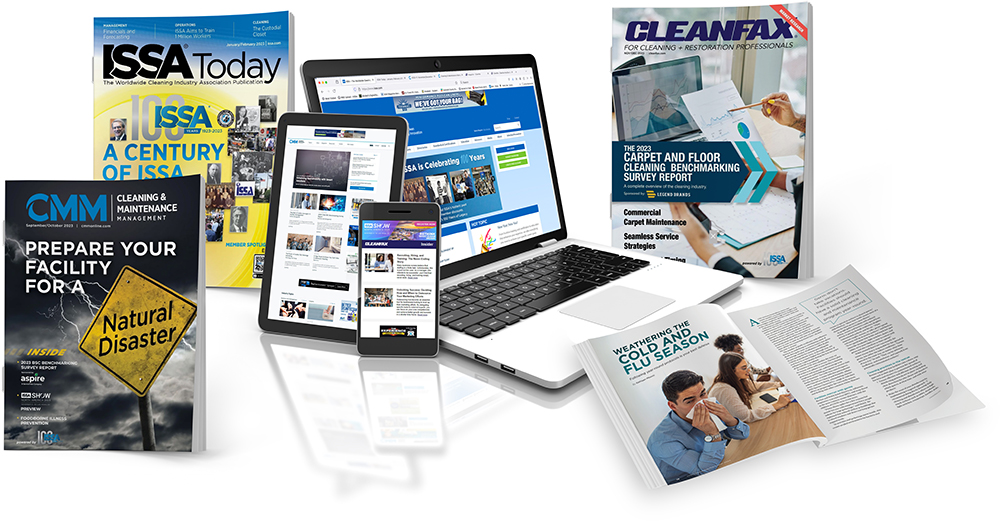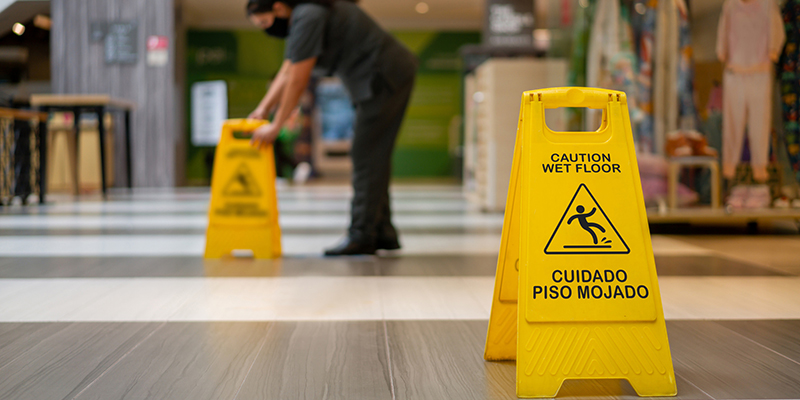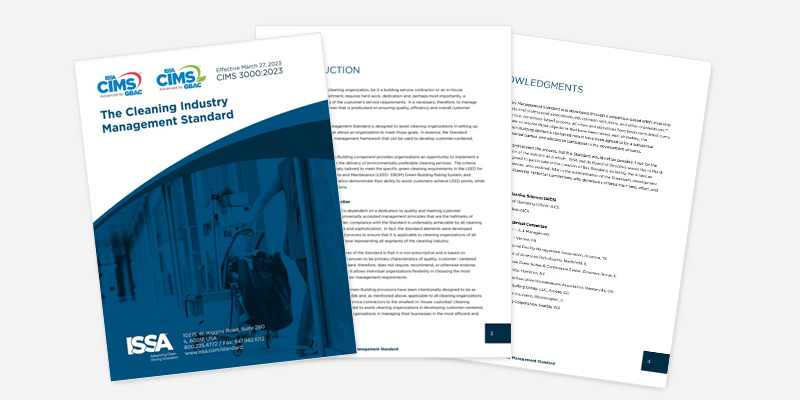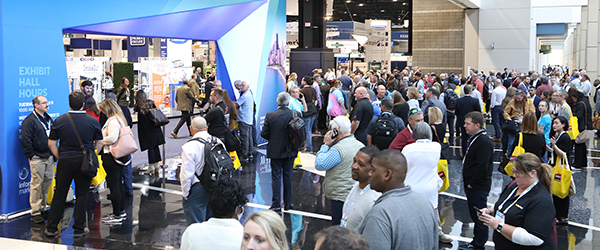IAQ Washing

Indoor air quality-washing refers to the practice of making misleading or exaggerated claims about the quality of indoor air or the effectiveness of products and services designed to improve indoor air quality (IAQ). Similar to greenwashing, IAQ washing aims to create a false sense of environmental responsibility or health benefits.
So, how can IAQ washing affect your cleaning business or organization, and what can you do about it? How can you avoid misleading IAQ claims and choose the right equipment, methods, and “IAQ story” to differentiate your services?
Avoiding IAQ washing is important to both health and business, as we each daily inhale 3,400 gallons or 25 pounds of air in 22,000 breaths, making indoor air a key path of potential exposure to pollutants compared to water and food, consumed daily at four to eight pounds and three to six pounds respectively. IAQ also impacts productivity. Lawrence Berkeley National Laboratory (LBNL) estimated the United States’ yearly return on investment (ROI) from better IAQ at US$20 billion to US$200 billion in enhanced worker performance; and that returns from IAQ improvements may exceed costs by 900%-1400%, largely through reducing triggers for asthma and other respiratory ills.
HEPA hype and vacuum cleaners
As an example of IAQ washing, some commercial vacuum cleaners are now labeled as “HEPA,” but having high-efficiency particulate absorbing (HEPA) filter media attached to the vacuum’s exhaust is not the same as achieving HEPA-level filtration.
HEPA filters are only as effective as the amount of air passing through them at a volume and speed that enables removing particles at the 99.97% of .3 microns dust capture rate (a human hair is about 70 microns in diameter). Unfortunately, some HEPA-equipped units do not achieve HEPA-level performance or proper cleaning due to the media being undersized for the application, getting clogged due to a poor pre-filter system, and/or because dust is escaping from other areas such as vacuum-body seals or at the interface between the floor and vacuum.
The Carpet and Rug Institute (CRI) provides useful guidelines for buying vacuum cleaners based on soil removal, indoor air quality, and carpet wear or “appearance retention,” and many of the vacuums receiving CRI’s Seal of Approval are non-HEPA models. Why is this important?
CRI does chamber testing of vacuum cleaners, during which the air in a chamber or closed room is measured to detect dust emissions from all parts of a running vacuum rather than just the exhaust.
Bottom line: It is the overall system that makes an effective vacuum cleaner, not just having a HEPA filter attached to the exhaust stream.
Particles vs gases—what you need to know
Airborne particles include dust, pollen, mold, smoke, bacteria, and viruses, while gases include carbon dioxide, carbon monoxide, radon, formaldehyde, or volatile organic compounds (VOCs). Depending on the type, size, distribution, exposure level of pollutants, and occupants’ vulnerability, both can have harmful impacts on the respiratory, nervous, immune, cardiovascular, and other systems.
Air monitoring—diagnosis before treatment
You can’t easily turn your customer’s facility into a controlled test chamber for particle and or gaseous emissions. But you can do the next best thing and install an active air quality monitor.
An active air quality monitor can measure indoor air quality over time and in real time from various sources and continuously through different events (cleaning, walking across floors or carpet, with the HVAC operating and not operating, etc.) in a single space, such as an office, hospital room, or classroom.
While a handheld particle counter can pinpoint a source of particles, such as from exhaust from a vacuum or air purifier, it is often better to monitor room air quality over time and in real time, as this best represents the health and cleanliness of the space in use.
Active air monitoring technology makes this possible, and some wall-mounted units can now detect particles as small as .1 microns— particulate that is deeply inhalable and may even carry viruses—exceeding HEPA criteria and perhaps meeting ultra-low particulate air (ULPA) standards (99.999% effective at .1 microns).
Some air monitors can detect gases such as carbon dioxide—serving as a proxy for indoor air quality in spaces such as classrooms—and VOCs, and enable trend analysis by uploading data to the cloud showing IAQ patterns that relate to dusting, vacuuming, disinfecting, room traffic, HVAC (heating, ventilation, and air conditioning) operation, time of day, foot traffic, and more. Advanced sensor technologies are capable of detecting airborne pathogens or germs.
Applying a medical analogy, sound diagnosis precedes effective patient treatment, making air quality monitors diagnostic tools for the cleaning “patient” or the customers’ indoor space.
Airborne pathogens—preventing infections
Airborne pathogens may cause infections in humans when carried by respiratory droplets, aerosols, and dust particles that may linger in the air for hours or days, depending on environmental conditions. They may settle on surfaces to remain infectious. Examples are COVID-19 (coronavirus disease 2019), MERS (Middle East respiratory syndrome), and SARS (severe acute respiratory syndrome). According to the “Airborne Precautions” guidelines from the U.S. National Institutes of Health (NIH), updated in March 2023, pathogens that may spread via airborne transmission include:
- Adenovirus
- Aspergillosis
- Bordetella pertussis
- Chickenpox
- Enteroviruses
- Influenza
- Legionellosis
- Measles
- Mumps
- Rhinovirus
- Rotavirus
- Smallpox
- Streptococcus pneumoniae
- Tuberculosis
The 99.9% fallacy
It is also common to see potentially misleading airborne pathogen kill claims in wording such as: “kills 99.9% of the germs that cause [name of disease]” implying that the product makes the indoor space healthier—which is misleading since an infectious dose will vary from person to person per the formula that Risk = Hazard x Exposure + Vulnerability. In other words, some people have better immune systems than others, so the risk of an infectious dose due to a given exposure will vary from person to person.
Also, claims are often based on controlled conditions and may cherry-pick certain organisms while ignoring other important ones.
Lastly, while adding germ-killing chemicals to the air may be the lesser of two evils, it is important to consider and balance the health impacts on workers and customers who may be inhaling these chemicals.
Telling your IAQ story
“Understanding scientific principles will help you be a more effective advocate for the quality of the air in your [or your customer’s] indoor environment,” noted author Jeff May in the book, “My Office is Killing Me.”
Telling your IAQ story may involve sharing with customers how your operation applies the latest scientific information to provide the best, healthiest service possible, perhaps customizing service offerings and tailoring the IAQ story for each customer.
For example, many people are sensitive to chemicals. A 2010 study, “A National Population Study of the Prevalence of Multiple Chemical Sensitivity,” by Stanley M. Caress & Anne C. Steinemann, found that 11.2% of Americans reported sensitivity to common chemical products, 31.1% of those had adverse reactions to fragranced products, and 17.6% had breathing difficulties and other health problems when exposed to air fresheners.
The article titled “International Prevalence of Chemical Sensitivity, Co-prevalences with Asthma and Autism, and Effects from Fragranced Consumer Products” was published in February 2019 in the journal Air Quality, Atmosphere & Health. This study, led by Anne Steinemann, investigated the prevalence of chemical sensitivity in four countries: the United States, Australia, Sweden, and the United Kingdom. This study found that:
- 9%, more than 61 million people, reported chemical sensitivity.
- 1% of those people reported health effects from fragrances.
- 6% of those persons lost workdays or a job the previous year due to exposure to fragrances at work.
As part of your marketing message, you could say: “Since cleaning chemicals add another potential source of contamination and health impairment to indoor spaces, we carefully manage and minimize the use of strong chemicals, especially given the prevalence of chemical sensitivity and the direct and indirect impact on costs.”
Also, your IAQ story may include sharing public health information from sources and information on the latest trends affecting customers. For example, you could mention:
- The U.S. Environmental Protection Agency (EPA) notes three science-backed ways to improve IAQ: source control (stopping pollutants at the source), ventilation (introducing fresh air, exhausting stale air), and purification of the air (using filtration systems).
- ASHRAE Standard 62-1981 includes an Indoor Air Quality Procedure (IAQP) that permits in-room air purifiers to complement facility ventilation requirements. This reduces the rigid requirement for air changes (e.g., five air changes per hour) and lowers related HVAC and energy costs. ASHRAE’s emphasis on the importance of localized, proximity cleaning of indoor air by extension points to the preventative impacts of proper dusting, well-filtered vacuuming, and less-chemically intensive cleaning indoors.
- Lastly, provide testimonials and references from satisfied customers. One of the best ways to tell your IAQ story is to let your customers do it. Ask those who have experienced the benefits of your green cleaning and IAQ-related services to provide testimonials and references that you can use online, in brochures, or on social media. You can also ask them for reviews on online platforms where prospects can find you and learn more about your IAQ story.
The Indoor Health Council™ is available to assist cleaning service providers in developing and telling their IAQ story in a way that helps all parties while improving the health of people in indoor spaces and the economic success of businesses. Please contact [email protected] for more information.



